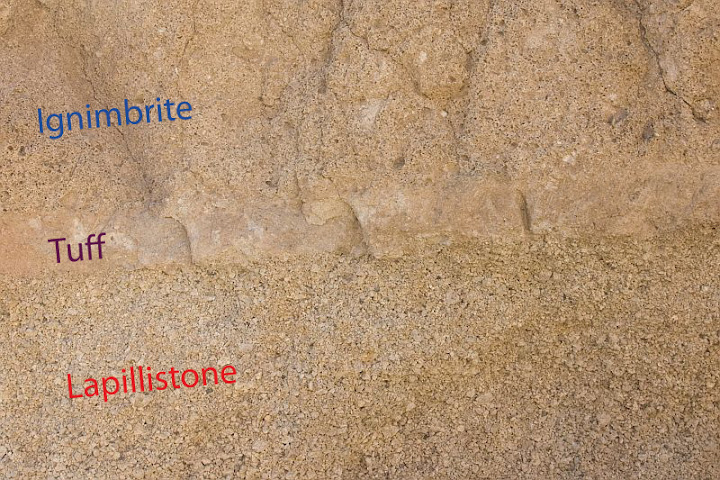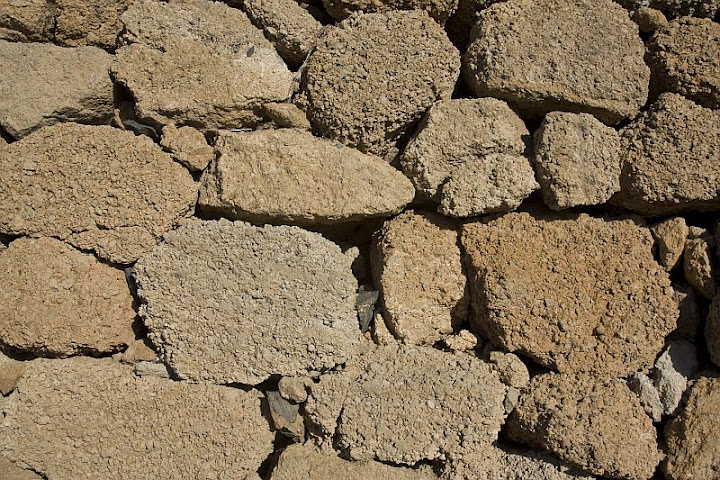Tenerife has a wide variety of volcanic rocks: from mafic basanite and basalt to evolved phonolite and trachyte. Hence, eruption styles differ considerably as well: from pahoehoe lava flows to fiery ignimbrites and pumice showers. In this post I will show some photos of pumice fall deposit in the southern part of the island which is known as the Granadilla pumice.
This formation covers 800 km2 and is a result of a large Plinian eruption that took place 32,000 years ago1 (However, studies conducted later indicate that this formation is much older — 600,000 years2). It originates from the Las Cañadas caldera that surrounds the Mount Teide. This eruption involves not only pumice fall deposits but also ignimbrites which are described here: Tenerife ignimbrite.
The Granadilla pumice is composed of angular and very well sorted pumice lapilli with a phonolitic composition2. It is a clast-supported deposit with very little fine ash between lapilli. It is a lapillistone according to the classification principles of pyroclastic rocks because it contains more than 75% of lapilli3.
Such deposits settle from high buoyant eruption columns (ash clouds). There is so little ash because it is blown away downwind while the larger lapilli fell down and covered the landscape with a thick blanket of well-sorted pyroclasts.

Lapillistone (Granadilla pumice) has a grainy look because it contains little else than pumice lapilli.

Close-up of the Granadilla pumice. Shorter edge of the gray card is 6 cm in width.

Granadilla pumice below, layer of tuff (thickness 15-20 cm) on top of it and then ignimbrite. All three have the same phonolitic composition.

People make their stone walls with what they have got. In this case they had to be satisfied with pumiceous lapillistone. Here is my gallery of stone walls.
References
1. Booth, Basil (1973). The Granadilla pumice deposit of Southern Tenerife, Canary Islands. Proceedings of the Geologists’ Association, Volume 84, Issue 3, Pages 353–370.
2. Gill, Robin & Thirlwall, Matthew (2012). Tenerife Canary Islands: Geologists’ Association Guide: No.49. The Geologists’ Association.
3. Le Maitre, R. W. (2005). Igneous Rocks: A Classification and Glossary of Terms: Recommendations of the International Union of Geological Sciences Subcommission on the Systematics of Igneous Rocks, 2nd Edition. Cambridge University Press.
Leave a Reply